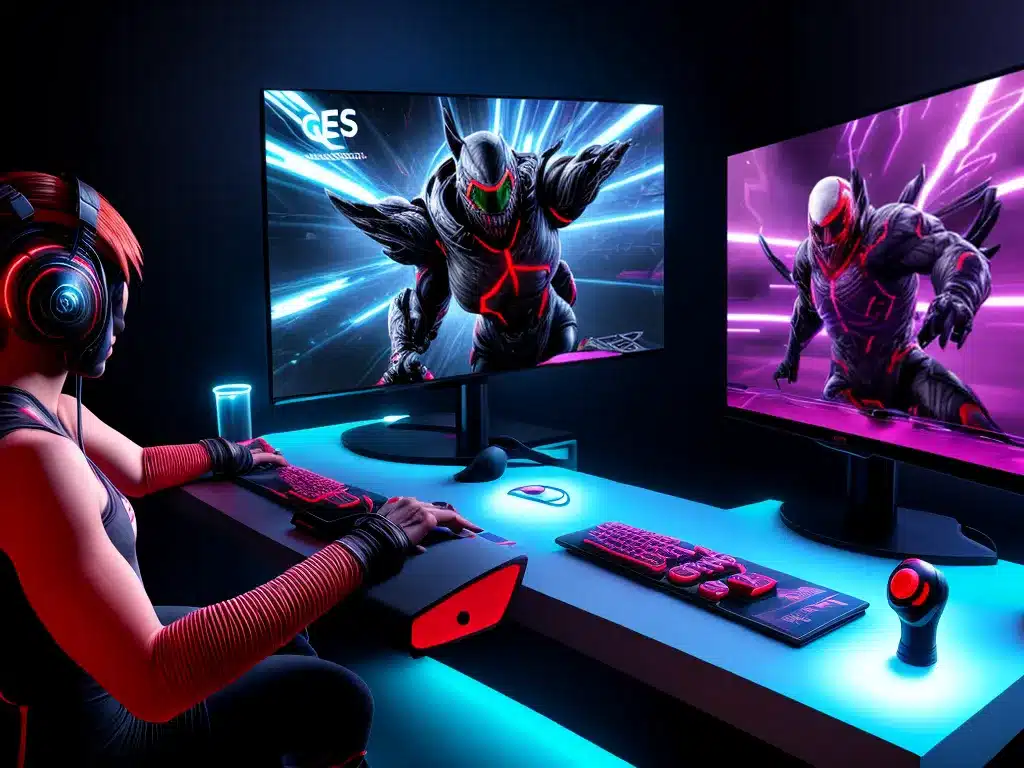Graphics options can have a big impact on competitive gaming performance. Choosing the right settings is crucial for maximizing frame rates and minimizing input lag. As a competitive gamer, you need to understand which options matter most so you can optimize your game for speed and responsiveness.
Render Resolution
The render resolution is one of the most impactful graphics options for competitive gameplay. This setting controls the resolution that the game renders at internally before scaling to fit your display resolution.
- A lower render resolution significantly improves frame rates but makes the image quality blurrier.
- A higher resolution reduces performance but makes the image sharper.
Competitive players often lower their render resolution to increase frame rates and reduce input lag. This is one of the best optimizations you can make if you have a high resolution display.
For example, setting your render resolution to 1080p while gaming on a 1440p monitor will boost frame rates at the expense of image clarity. The benefit is lower input lag and higher responsiveness which is crucial for competitive play.
Anti-Aliasing
Anti-aliasing (AA) is a graphics setting that smooths out jagged edges in games by blending pixels. AA comes at a heavy performance cost and also slightly increases input lag.
- Higher AA settings like 8x or 16x MSAA are very demanding and not ideal for competitive gaming.
- Lower settings like 2x or 4x MSAA have less impact but still reduce frame rates.
- Completely disabling AA can provide a significant performance boost.
The visual benefit of AA is not usually worth the performance hit for competitive play. Most players disable AA entirely when playing competitively to maximize frame rates.
Shadows
Complex shadows cast by dynamic lights are extremely taxing on graphics hardware. Longer, more realistic shadows require more GPU power to render smoothly.
- Lower shadow settings massively improve frame rates and performance.
- Completely disabling dynamic shadows removes their performance cost.
- Shorter shadow distances concentrate the rendering workload closer to the player.
Competitive players generally keep shadows to a minimum or disable them completely. The visual quality downgrade is worth it for the performance gains. Static world shadows have much lower cost and may be left enabled.
Texture Quality
Texture quality adjusts the resolution and detail of surface textures in the game. Lower settings save VRAM usage while higher settings require more VRAM for higher resolution textures.
- High and ultra texture settings are very VRAM demanding and excessive for competitive play.
- Medium or low settings optimize VRAM usage while still retaining sufficient texture detail.
- Texture quality has a smaller impact on frame rates compared to other settings.
Medium texture settings are recommended to balance visuals and VRAM usage for competitive gaming. Lower settings may be warranted if VRAM is limited. Higher levels do not improve competitive performance.
View Distance
View distance or draw distance determines how far you can see in the game world. Higher values render more terrain and objects at farther distances.
- Lower view distances greatly reduce graphics workload by limiting rendering to closer range.
- Higher settings allow you to see players and action at longer distances but reduce frame rates.
- Striking a balance is key – you need sufficient distance to spot enemies without overburdening your GPU.
Average or medium view distances are best suited for competitive gaming. You can spot enemies and action without wasting resources rendering unnecessary background details at extreme distances.
Effects and Post-Processing
Visual effects like ambient occlusion, depth of field, motion blur and post-processing effects introduce graphical enhancements but are extremely taxing on gaming hardware.
- All these effects should be disabled or minimized for competitive gaming.
- Effects like lens flares, bloom, and depth of field make the image prettier but obscure visibility.
- Motion blur significantly increases input lag and should always be turned off.
Eliminating unnecessary visual effects and post-processing removes their performance penalties. You need crisp, high-visibility graphics to compete, not cinematic effects.
Model Detail and Texture Filtering
Model detail adjusts the complexity of in-game player and object models. Higher settings render more polygons and 3D detail for smoother quality.
Texture filtering enhances surface texture clarity when viewed at steep angles. Higher filtering levels like 16x anisotropic are very demanding.
- Competitive players generally use medium model detail and low or medium texture filtering.
- Lower settings sacrifice some graphical fidelity for improved frame rates and input response.
- High model detail and texture filtering do not provide competitive advantages.
Smoothness and image sharpness are not as critical in competitive gaming. Medium model detail and medium texture filtering balance visuals and performance.
Conclusion
Optimizing graphics options for competitive gaming is about maximizing frame rates and minimizing input lag. Settings like render resolution, AA, shadows, view distance and effects have the biggest impact. Finding the sweet spot between visual fidelity and high performance takes experimentation. Test different configurations in actual gameplay to see what works best for your setup. Every piece of hardware behaves differently. With the right tweaks competitive players gain an edge by tailoring graphics options for speed over eye-candy.













